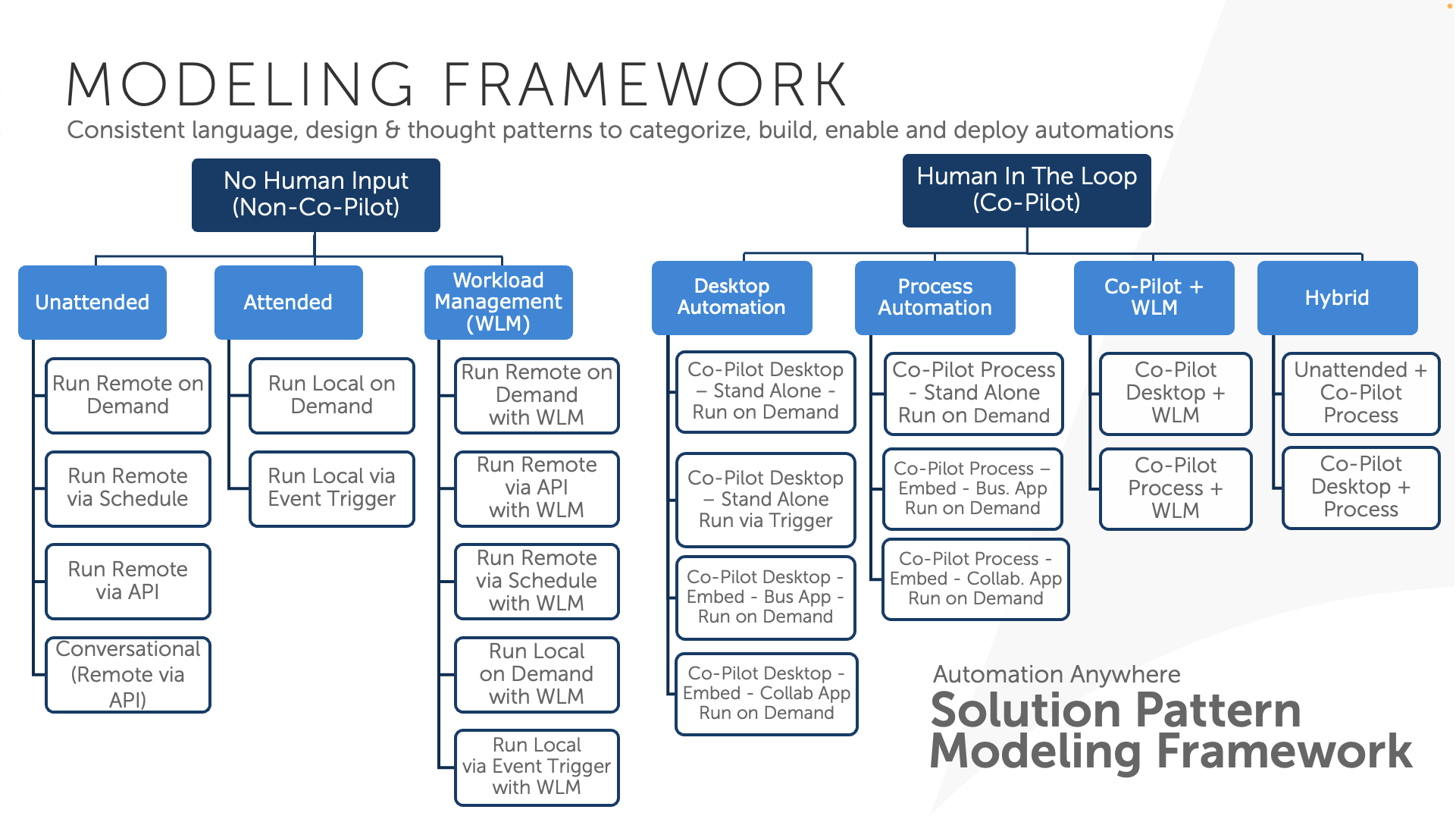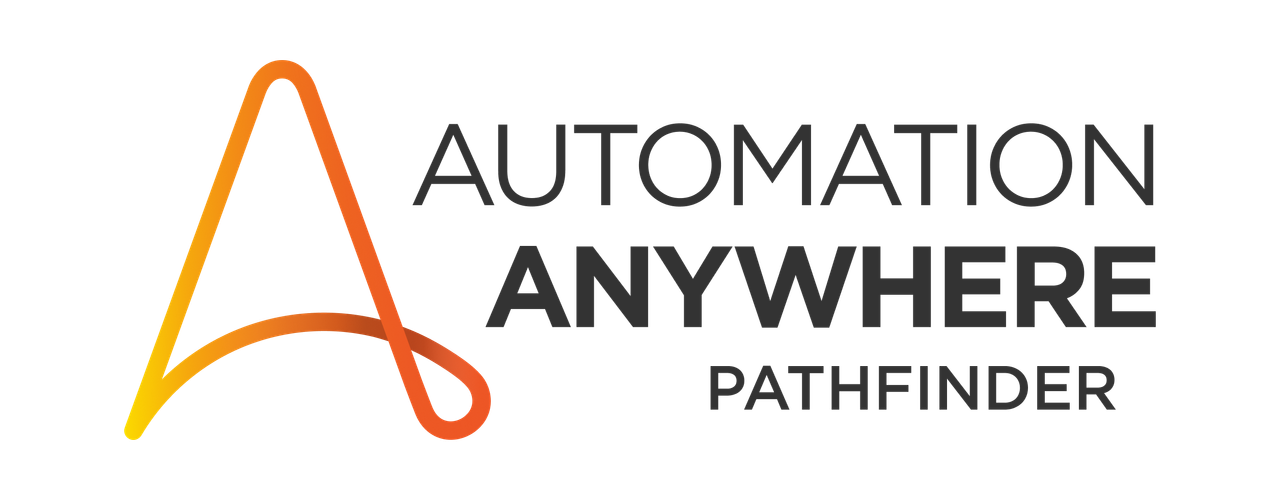It can be a challenge to think about all the different ways that Intelligent Automation can be used and implemented. From running automations locally to ones running unattended on a server somewhere, or the automation + human collaboration capabilities of Automation Co-Pilot - there's a lot to consider when identifying new Intelligent Automation use cases to take on:
- Should it run locally or on unattended runner(s)?
- Should it be invoked by a human or run on a schedule?
- What roles do I need to give the runner? What roles do I need as a developer?
- What automation framework should I be using?
Standardizing the Process
In an effort to sort through some of this, Automation Anywhere has created a Solution Pattern Modeling Framework. This Solution Pattern Modeling Framework is designed to enable users to systematically categorize automation opportunities in order to simplify everything from automation builds to establishing roles, and configuring deployable assets into your environment. The benefits of using this Solution Pattern framework include:
- Streamlining the process of complexity/effort estimation
- Determining the required product licensing
- Clarify the process of creating/applying appropriate roles
- Standardizing the process of creating each automation with appropriate automation frameworks (templates)
- Establishing the appropriate setup/deployment configurations
Applying the Modeling Framework
The Solution Pattern Modeling Framework is designed to be applied as you start working through a new use case to help speed up the process of building out your automation or as you're exploring new possibilities for automation and looking for some inspiration on different automation patterns. That said, the solution patterns described and the roles they contain can be an excellent reference for your existing automations/roles to be sure you've included everything needed for a complete production implementation: least privilege roles, robust error handling, reusable code, etc.

Ultimately, the Solution Pattern Modeling Framework comes down to a series of questions that can help you to think through how your use case will be implemented, and can then provide guidance on the best template/framework to use as well as the appropriate roles needed (and their configurations) to support said use case. Learning and applying this modeling framework can enable RPA developers/users to identify tasks for automation they may not have previously considered, as well as have a systematic approach to their solution designs. As you go through the questions below, take a look at the various capabilities contained within each option as they may encourage you to think about your processes in a slightly different way.
Getting Started with Solution Pattern Modeling
How Will Your Automation Run?
Will your automation require human input or will the automation be able to run with no human input required?
No Human Input (Non Co-Pilot)-->
-no human involvement is expected during the automation’s execution
Human In-The-Loop (Co-Pilot) -->
- automation and human are expected to collaborate together
